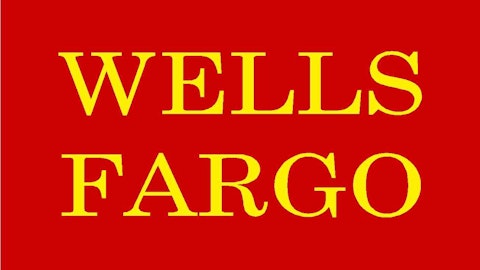Fellow Fools, when I run across a company I might be interested in as an investment — one that I know next to nothing about — I typically start my investigation by just jumping in and taking a quick look around. And that’s how I’ve designed this “7 Things You Need to Know” series: a quick scan of the facts, in no particular order, that gives you — the potential investor — a mix of high- and low-level takeaways.
BB&T Corporation (NYSE:BBT) Bank ? I know its a regional bank, but that’s about the extent of my knowledge. So here’s the start of my personal investigation into BB&T.

A visit to the Federal Reserve’s National Information Center reveals that BB&T Corporation (NYSE:BBT) is the country’s 15th largest bank-holding company. This makes it bigger than both American Express Company (NYSE:AXP) and Deutsche Bank AG (USA) (NYSE:DB)‘s U.S. operations. Size in and of itself means nothing, but used skillfully, a bigger bank can generate greater revenue and profit than a smaller rival can.
2. Solid share-price performance
Year to date, BB&T Corporation (NYSE:BBT) has generated a return of 12.67% for shareholders. Over the past year, it’s generated 13.35%. BB&T may be no Bank of America Corp (NYSE:BAC), which has returned 64.22% to shareholders over the past year, but this is a solid performance for any stock.
3. A better first quarter than at first glance
For the first quarter of 2013, BB&T Corporation (NYSE:BBT) grew its revenue by 6.50% year over year, while its income shrank by 44.30%. A terrible performance, no doubt, but one that can be chalked up to a $281 million tax adjustment. A quick look at the bank’s 2012 annual report showed that net income for 2012 grew by 48.6% over 2011, making 2013’s terrible first-quarter performance very likely a one-off.
4. Nice return on assets
Return on assets, or ROA, is a management efficiency metric, and tells investors how efficient a company is at turning assets — like debt and equity — into earnings. BB&T Corporation (NYSE:BBT)’s ROA of 1.03% trailing 12 months is right in the pocket, blowing away B of A’s ROA of 0.23%. Citigroup Inc. (NYSE:C)‘s 0.46% isn’t much better, proving the previously made point that bigger isn’t necessarily better.
5. Solid return on equity
Return on equity, or ROE, is another management efficiency metric, and it tells investors how efficient a company is at turning shareholder money into profits. BB&T has a solid, if not stellar, ROE of 9.40% trailing 12 months. Lean, mean banking machines Wells Fargo & Co (NYSE:WFC) and JPMorgan Chase & Co. (NYSE:JPM) have ROEs of 13.07% and 11.55% respectively. BB&T needs to try harder here, but 9.40% is respectable nonetheless.
6. A handsome dividend
BB&T currently pays its shareholders an annual dividend of 2.7%. That’s a decent yield. JPMorgan only pays slightly higher: 2.9%. Wells Fargo pays the same. For the record, B of A pays 0.03%, and Citigroup pays 0.10%.
7. Increased net revenue
For the first quarter of 2013, BB&T increased its total net revenue by 4.9% year over year, an impressive feat at a time when other banks’ revenues are flat or even declining. For the same period, Wells Fargo grew its revenue by only 2%, and JPMorgan by even less: 1.2%. You can grow your income without growing your revenue — cutting costs is one way — but it’s not sustainable.
Foolish bottom line
BB&T isn’t huge, but it’s big enough to matter. And its ROA and ROE demonstrate the bank is skillfully using that size to its advantage, as well to the advantage of its shareholders. Past-year and year-to-date returns are solid, the bank pays a healthy dividend, and it’s even managed the impressive trick of growing its revenue at a better rate than two of the country’s biggest banks. All of this makes BB&T a bank worth further investigation, at the very least.
The article 7 Things You Need to Know About BB&T Bank originally appeared on Fool.com and is written by John Grgurich.
Fool contributor John Grgurich owns shares of Citigroup and JPMorgan Chase. Follow John’s dispatches from the not-so-muddy trenches of big-banking and high-finance on Twitter @TMFGrgurich. The Motley Fool recommends American Express and Bank of America. The Motley Fool owns shares of Bank of America, Citigroup, and JPMorgan Chase.
Copyright © 1995 – 2013 The Motley Fool, LLC. All rights reserved. The Motley Fool has a disclosure policy.



